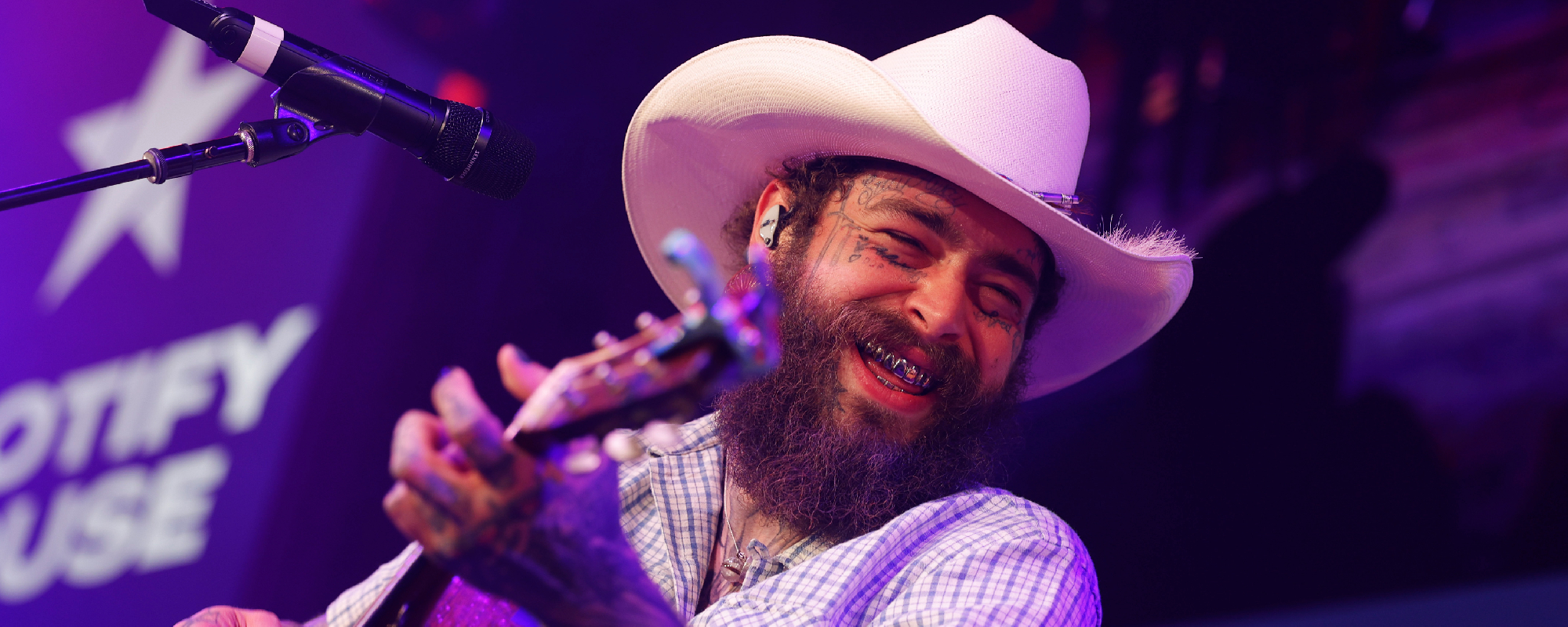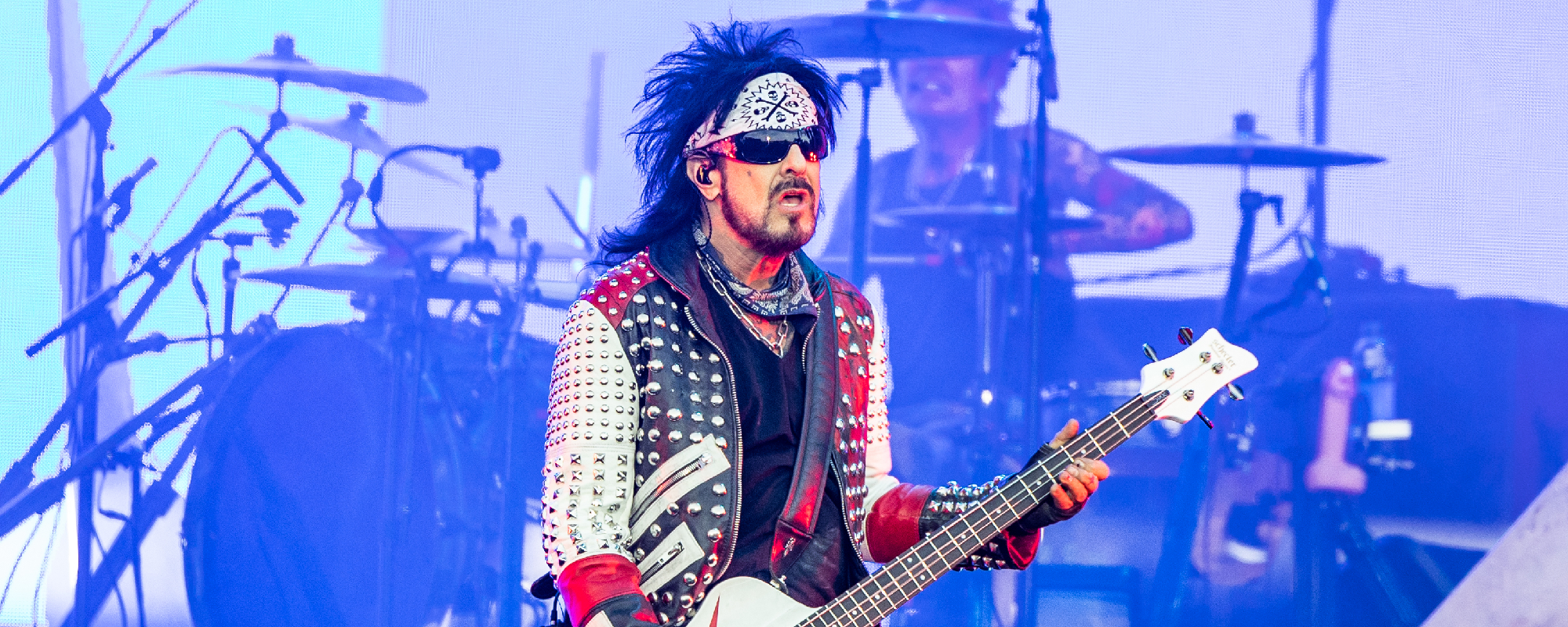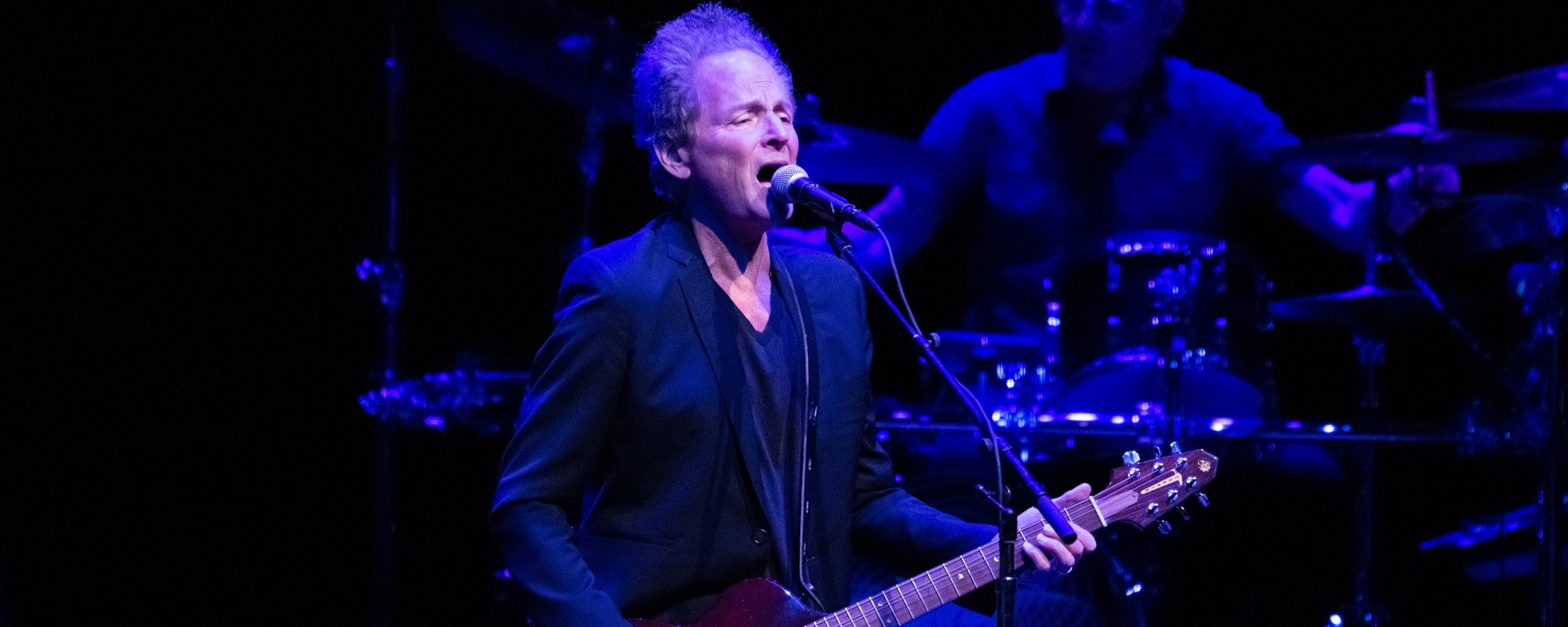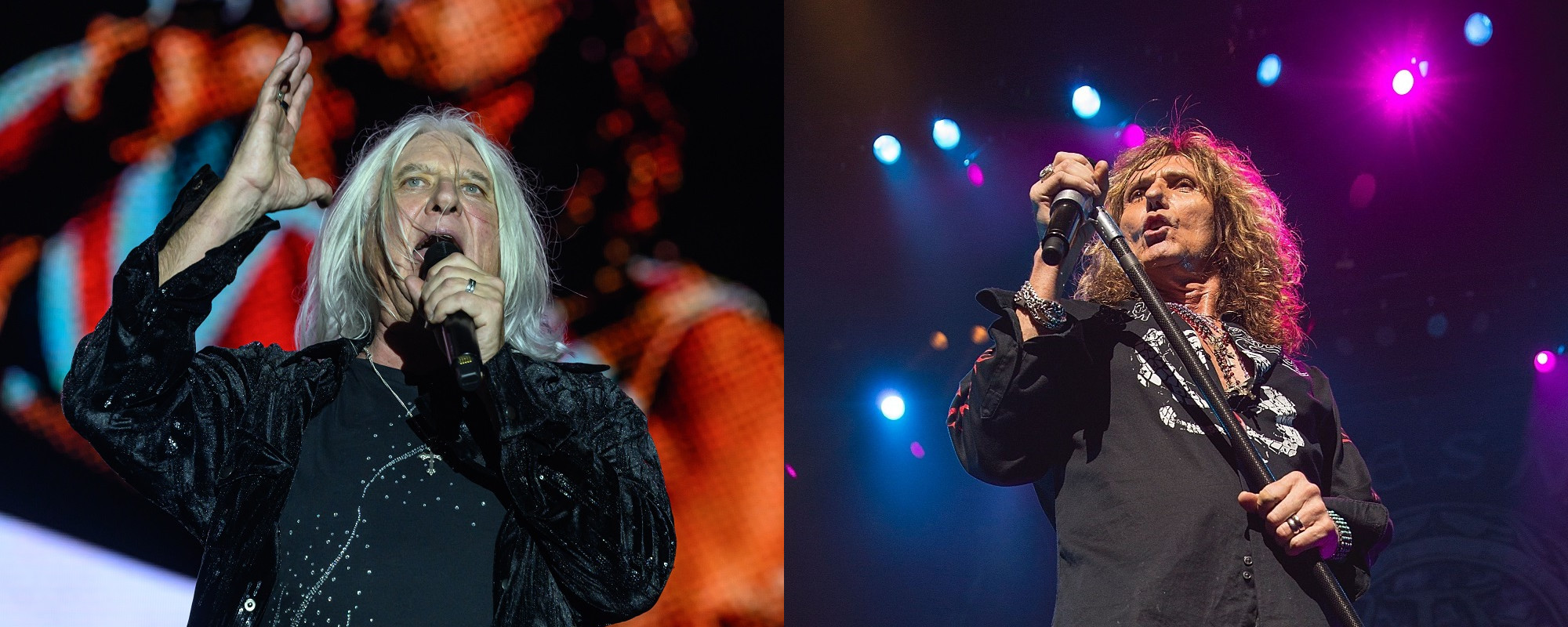Remembrances of the legendary producer from Steve Earle, Michael Blair, Eric Andersen, Perla Batalla & more.
“Hal was the ringmaster of his own circus,” said percussionist Michael Blair. “Sometimes it felt like the clown car. But most often, we were the acrobats, wondrously defying gravity. It was always the most serious fun I could ever have.”
Blair worked often with Hal Willner, the great producer-musician who we lost last week to complications of the Coronavirus. I was blessed to be among that lucky club of musicians who knew and worked with Hal, many of whom spoke to us about him for this story.
Hal Willner was born in Philadelphia in 1956 and died at his Upper West Side home in Manhattan on April 7, one day past his 64th birthday. He left behind his wife, Shelia, his teenage son, Arlo, a sister and his 95-year old father, who survived the Holocaust.
Videos by American Songwriter
On April 11, a tribute to Hal was presented on “Saturday Night Live,” where he worked since 1980 as producer of sketch music. He also produced albums for a great range of artists, including Lucinda Williams, Lou Reed, Laurie Anderson, Marianne Faithfull, Allen Ginsberg and William Burroughs.
But he will probably be best remembered for the series of delightfully diverse tribute albums and live tribute concerts to his favorite composers, each featuring eclectic casts of musical artists from every genre that no one else would consider bringing together.
These tributes honored composers he loved and felt deserved the kind of attention devoted usually only to pop icons. Kurt Weill, Harold Arlen, Nino Rota, Thelonious Monk and Charles Mingus were all the subjects of these acclaimed albums.
The day of his death, April 7th, 2020, was the same day that we lost another beloved musical treasure, John Prine. It remains one of those terrible days when the music died, like December 8th, 1980, when Lennon was killed, or February 3rd, 1959 when Buddy Holly, Ritchie Valens and The Big Bopper (J. P. Richardson), all died in a plane crash. A day, not unlike 9-11, that you wish you could forget, but never can.
Hal and Prine both died during the pandemic, during which a terrible pall has hung over everything, topped off with a double-helping of fear, that can only be beaten back with the power of a sledgehammer or some Sister Sledge, whichever is immediately more available.
Now from my quarantined California window I can see coyotes strutting down the middle of Main Street in this deserted Western town, while red-tailed hawks, instead of airplanes, circle above in the grey cloud lapping, while ravens caw cacophonously in trees, and the skunks stink even more than ever. Just because they can.
All the better to stay indoors. And use this time in solitude to reach out to some folks who worked with Hal, and ask them to press the rewind button (painful as it is so close to his tragic passing), and share a few memories of working with the late great man.
“Man, it was a rough day,” said Steve Earle of April 7th. “We knew John Prine had been ill and in the hospital. It seemed like he was getting better. But Hal? That came outta nowhere. I just had lunch with him recently at a party for David Amram [the great Beat-era composer/pianist/French hornist].
“Every time Hal called it was an adventure. Sometimes his shows were five hours long. I loved how he’d reside over the chaos. I think he reveled in it. He always assembled the most amazing cast of musicians. I played his Tribute to Harry Smith Show at St. Anne’s in Brooklyn [in 2001] with Bob Neuwirth and Kate McGarrigle. We all had banjos! Three banjos! [Laughs] I also met and played with Bill Frisell that night, and sang “John the Revelator” with Marianne Faithfull, Beck [and Todd Rundgren].
“People say this all the time about their friends when they pass away but, it’s really hard to imagine a world without Hal Willner.”
Folk legend Eric Andersen also weighed in on his old friend. “I met Hal in New York in 1991,” Andersen recalled. “He contacted me about participating in a tribute show to Tim Buckley. I was in from Europe, and Syd Straw and I did Buckley song with Marc Ribot and G.E. Smith. I happened to meet Jeff Buckley there and he basically sat me down and debriefed me on any tidbit of a memory I had of his dad in the Village in the sixties. He was sweetness incarnate.
“Later, I saw Hal quite a bit with Lou Reed. Mainly for dinners, movies, or concert performances. I saw more of him at a few of Lou’s Berlin performances in Europe. Lou and he had a Sirius satellite radio show they would tape in hotels on the road.

“After Lou died, I saw Hal a lot. He became a very loyal friend and would come to my shows in New York or in L.A. if he was in town. I would sometimes visit his tiny studio on Ninth Avenue and once played him my Byron album. He had already heard the previous Camus work and was impressed, so we sat and listened to Byron together surrounded by his puppets and cartoon character doll paraphernalia.
“I was nervous. He put it on, turned away, and listened uninterrupted from track one until it was finished. When it was finished, he just sat for several moments then swiveled around from the Genelecs [speakers] and smiled. `I love it,’ he said. `Finally, real music!’ This meant a lot coming from Willner.
“We began talking about doing a limited run one-man show in New York around the Camus and Byron albums. We discussed theaters. He would produce it, prepare it, and present it.
“I did see him once in February for the last time. We met at Laurie Anderson’s where he had been doing interviews about Lou. He was working on a project in London. But we hung on to the dream of one day doing this Off-Broadway show. Sadly, it appears for now, our project will have to be put in hold for later time.”
“Hal had scary ears, and an unbelievable memory,” sound engineer/producer John Kilgore said. “I never saw him sit down at a piano. He didn’t arrange music that way. But he could really hear! Whenever he’d fit pieces of stock music together [for film soundtracks, skits on “Saturday Night Live” or his own albums], he invariably knew the tempo and what key the music was in.
“In the studio he’d speak to the band in non-musical ways (think John Lennon telling George Martin to `make it sound orange!’). I worked with him on Mary Lee Kortes’ album, Songs of Beulah Rowley [at Kilgore Sound, literally across the hall from Hal’s studio, called “The House of Knuck,” in the Film Center Building in Midtown Manhattan].
“We started off with Mary Lee and two guitarists running down the songs. The band had a particular way of playing and was very familiar with the songs. So, he said, ‘Let’s re-arrange it, re-work it completely,’ and made everyone re-think the music, and approach the songs with fresh ears. Question marks were popping up above everyone’s heads, like, ‘WTF is he talkin’ about?’ He made you think in completely different ways. That’s how he got such great results.”

“I was in the early stages of my Songs of Beulah Rowley project,” said singer-songwriter Mary Lee Kortes, “and working with manager Mike Maska, who thought Hal would be a great producer for the project. He introduced Hal to the story and some of the songs, which were basic wacky home demos at that point. Hal fell in love with it. In our first meeting, he told me he hadn’t come across anything like that before. Imagine how that felt, coming from someone of his encyclopedic knowledge.
“Hal was a truly lovely soul; generous and non-judgmental. He had that mystic ability to perceive and appreciate people’s individuality, help them crawl inside it, own it and expand upon it. When we finished the album, he said it might be his favorite thing he ever recorded. I thought to myself, but what about all that Lou Reed stuff?’ I was amazed and flattered beyond words.”
Singer-songwriter-activist Stephan Said met Hal through Allen Ginsberg, who brought them together. “Hal saw me singing folk songs at a Harry Smith tribute,” said Said. “Then the next day I was accompanying Amiri Baraka on jazz violin while he read a tribute to Miles Davis.
“Hal and I connected on various musical fronts, from folk to avant-garde to jazz, but our primary connection was the poetic/bardic legacy of Blake, Burns, Guthrie, Seeger and Dylan, as well as my efforts to reinvent that for the global, post-apocalyptic generation.
“One of my favorite experiences working with Hal was on the first day of recording my album difrent which he produced in 2012. He had us play my song ‘Another World Is Possible,’ repeatedly at different tempos. We didn’t get a single keeper the first day. It took unbelievable concentration and energy, and we’re talking amazing legendary players – Cindy Blackman Santana playing drums, and horns by Lenny Pickett, Art Baron, Earl Gardner and Howard Johnson.
“But what Hal had done with that exercise was to rapidly suck us all into the same vortex of creativity, which we sustained for the next seven days. The next morning, we came in and knocked off three or four tunes quickly, and continued that way, locked in step, for the duration. It was masterful, and he knew exactly what he was doing.”
Guitarist/songwriter Gary Lucas, who worked with Captain Beefheart and Jeff Buckley, spoke of Hal’s greatness as a record producer. “He was a very focused and adroit producer in the studio,” he said. “He knew what he wanted. He always had skilled engineers and occasional arrangers around him at his sessions to enable him to achieve this. Hal didn’t mess around with endless takes. He didn’t have the luxury of time and lavish budgets. Either your performance was happening, or it wasn’t.
“This proved true when recording solo (my steel guitar take on “Haitian Fight Song” for his Weird Nightmare Mingus tribute album) or as part of a larger ensemble (as on Lori Carson’s 1990 debut album Shelter).
“Hal’s editing skills were impressive; he knew how to layer and elide disparate pieces of music into a seamless whole. In that way he reminded me of Teo Macero (Columbia’s in-house producer who oversaw classic recordings by Charles Mingus, Thelonious Monk, Dave Brubeck and Miles Davis), another mad studio conceptualist who knew his way around a razor, or in Hal’s case, a digital editing console.”
Singer-songwriter Perla Batalla fondly recalled meeting Hal in 1989 when he was music producing NBC’s “Night Music.” “At the time,” she said. “I was on tour with Leonard Cohen. Hal took pride in putting together unlikely combinations of performers on all of his projects. In this case, he paired Leonard, Sonny Rollins and Was (Not Was) to perform ‘Who by Fire.’ Hal and I became fast friends that snowy day in New York City.
“Years later, in 2003, Hal called to talk about his ideas for a new project that came to be called Came So Far For Beauty, an off-center, arty tribute to Leonard Cohen’s music with a huge cast that ultimately included Lou Reed, Laurie Anderson, Nick Cave, Linda Thompson, and dozens more. He wanted Leonard’s blessing and asked if I could set up a meeting.
“I picked up Leonard at his funky duplex and we drove to Hal’s hippie Venice Beach pad in the canals. We walked on the sunny boardwalk to a coffee shop. We had a wonderful time, talking about music, sharing stories, jokes and yes ultimately Leonard gave Hal his blessing. Hal could have done the show without Leonard’s blessing, but it meant a lot to him to have it. He was sweet that way and I was more than happy to arrange this meeting of two brilliant men that I loved so much.”
“Hal cast his record projects and live events as a film director does,” explained Michael Blair, who has played with Tom Waits, Elvis Costello and many others. “Every musician he tapped to contribute already had a clear, developed personality on their instrument and/or voice. So, my feeling was Hal brought me (and any of ‘us’) into his universe because he was curious about what we would bring to a theatre of sound; how we would solve a problem or face a challenge. And by showing me a deep and warm trust, I always wanted to please him, and to give him my best, most creative, and attentive self.
“As it turned out, my arrangements book-ended both the Weird Nightmare (Charles Mingus tribute) and Lion for Real (Allen Ginsberg tribute) albums. I will be forever grateful for his vision and guidance. I became a more effective musician (and person) because he believed I could.
“Hal was the ringmaster of his own circus. Sometimes it felt like the clown car. But most often, we were the acrobats, wondrously defying gravity. It was always the most serious fun I could ever have. I’m struggling with him having left the building.”
Although”Saturday Night Live” did a loving tribute to Hal, if you really want to know something about how this brilliant man worked his sonic sorcery, watch this sketch by his guru, comedian Soupy Sales, the inventor of “Atmosphere Music Pills.” It might even make you laugh, despite our collective grief. – J.K.







Leave a Reply
Only members can comment. Become a member. Already a member? Log in.